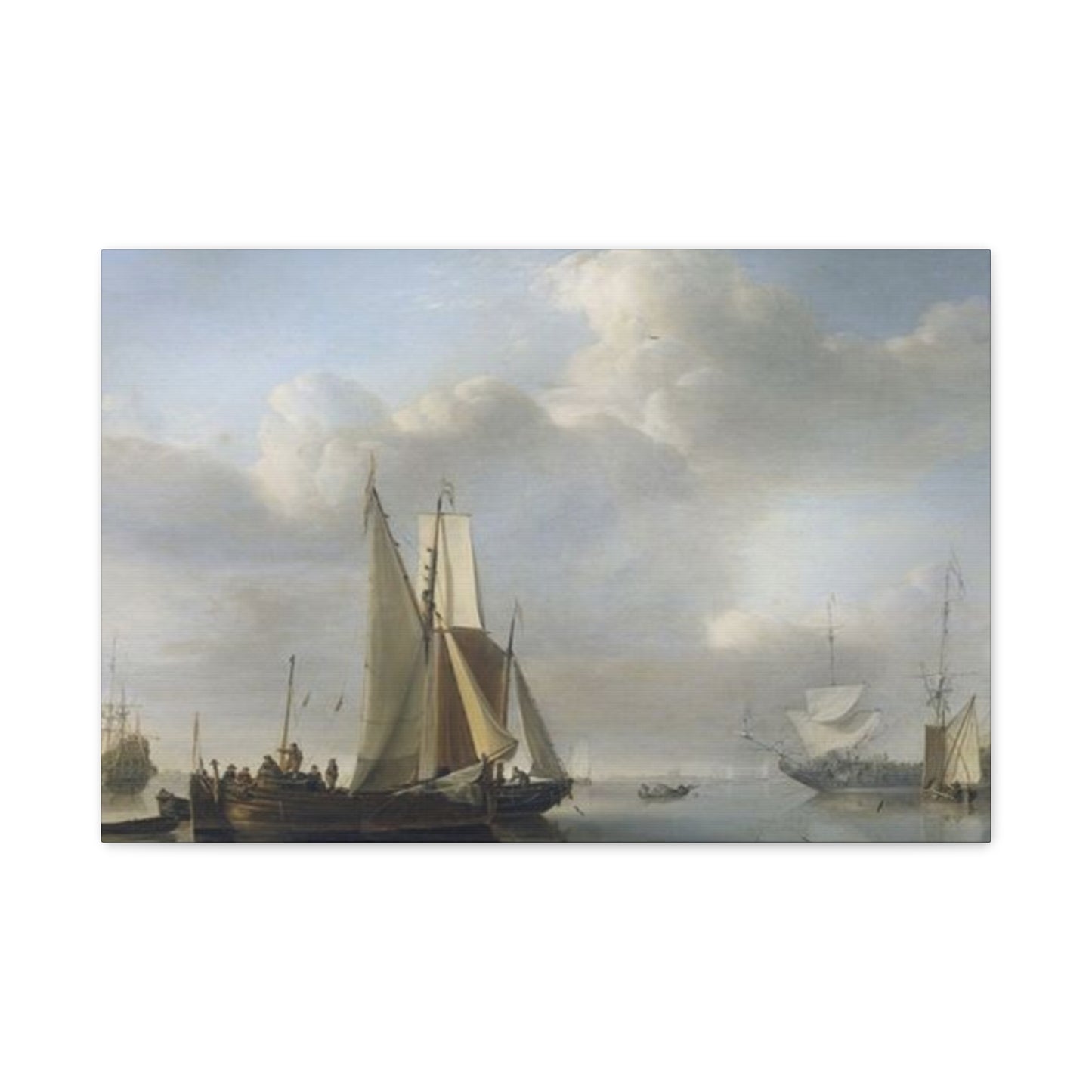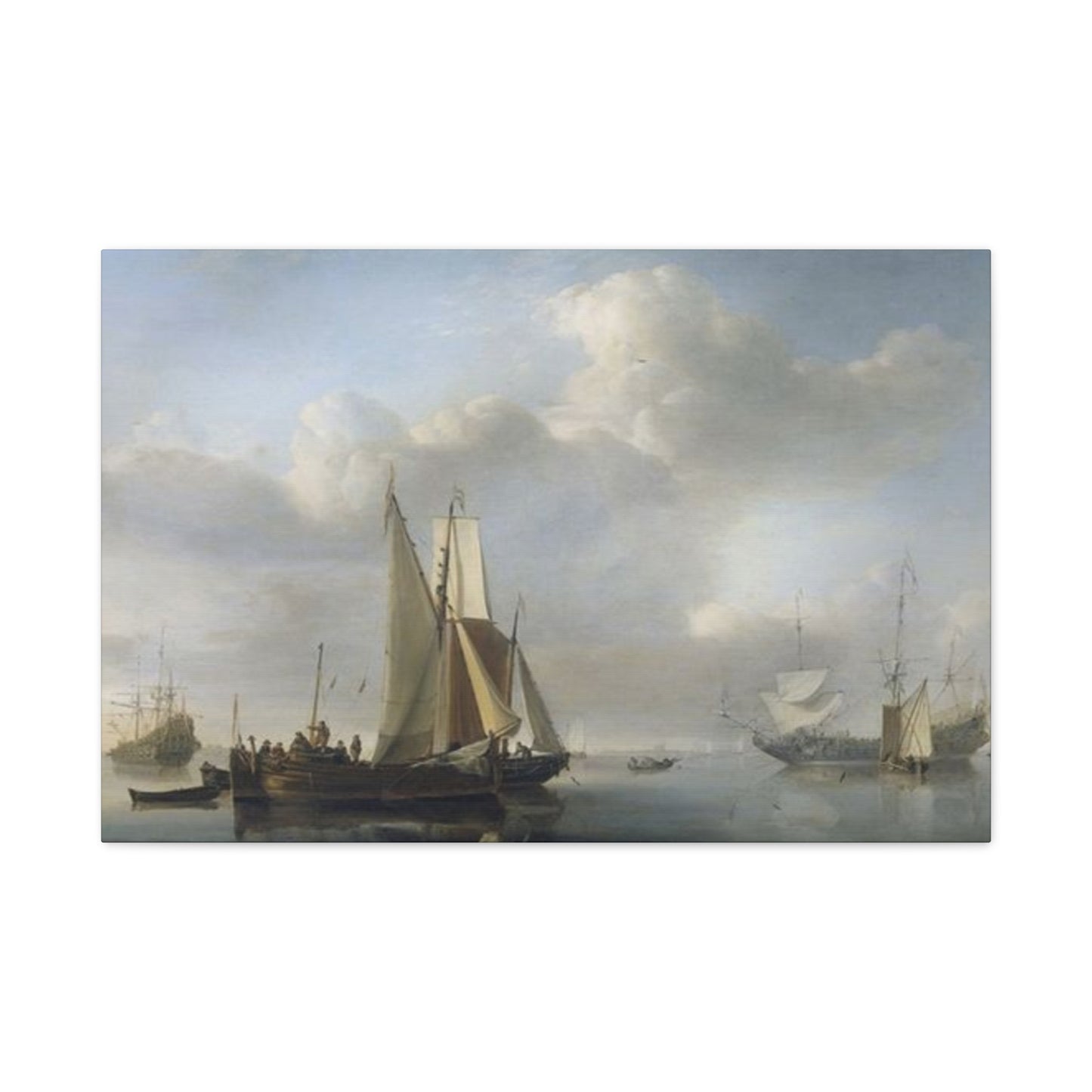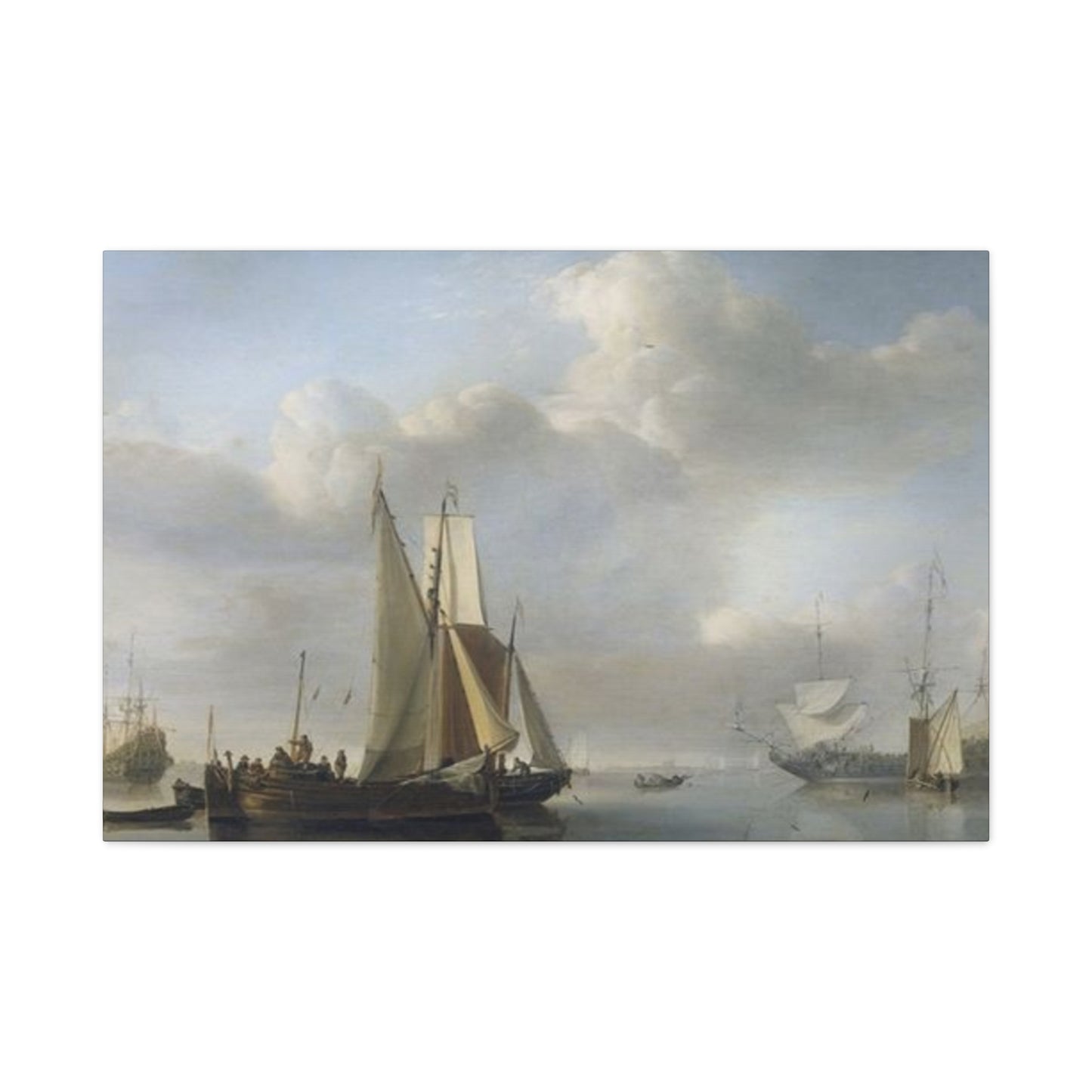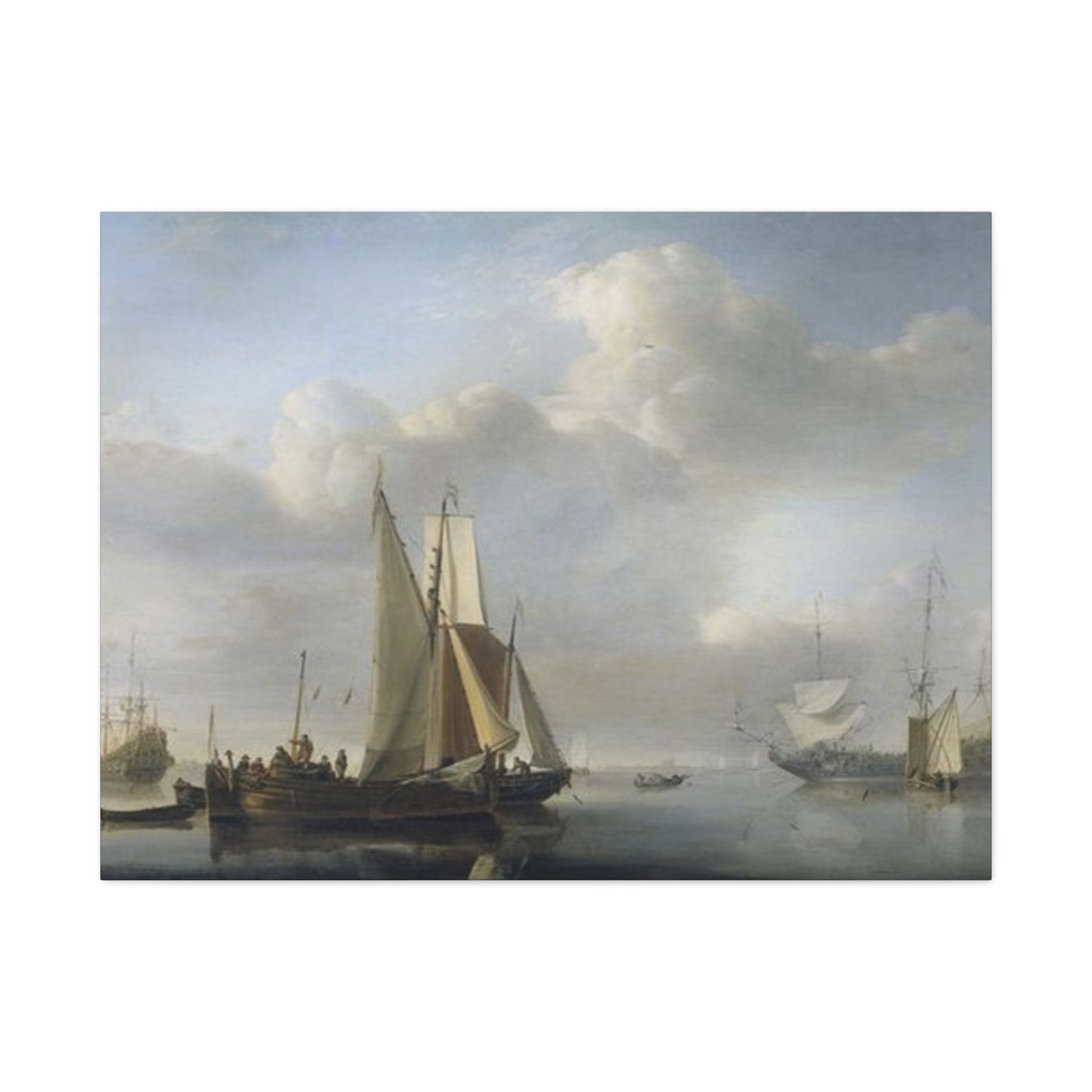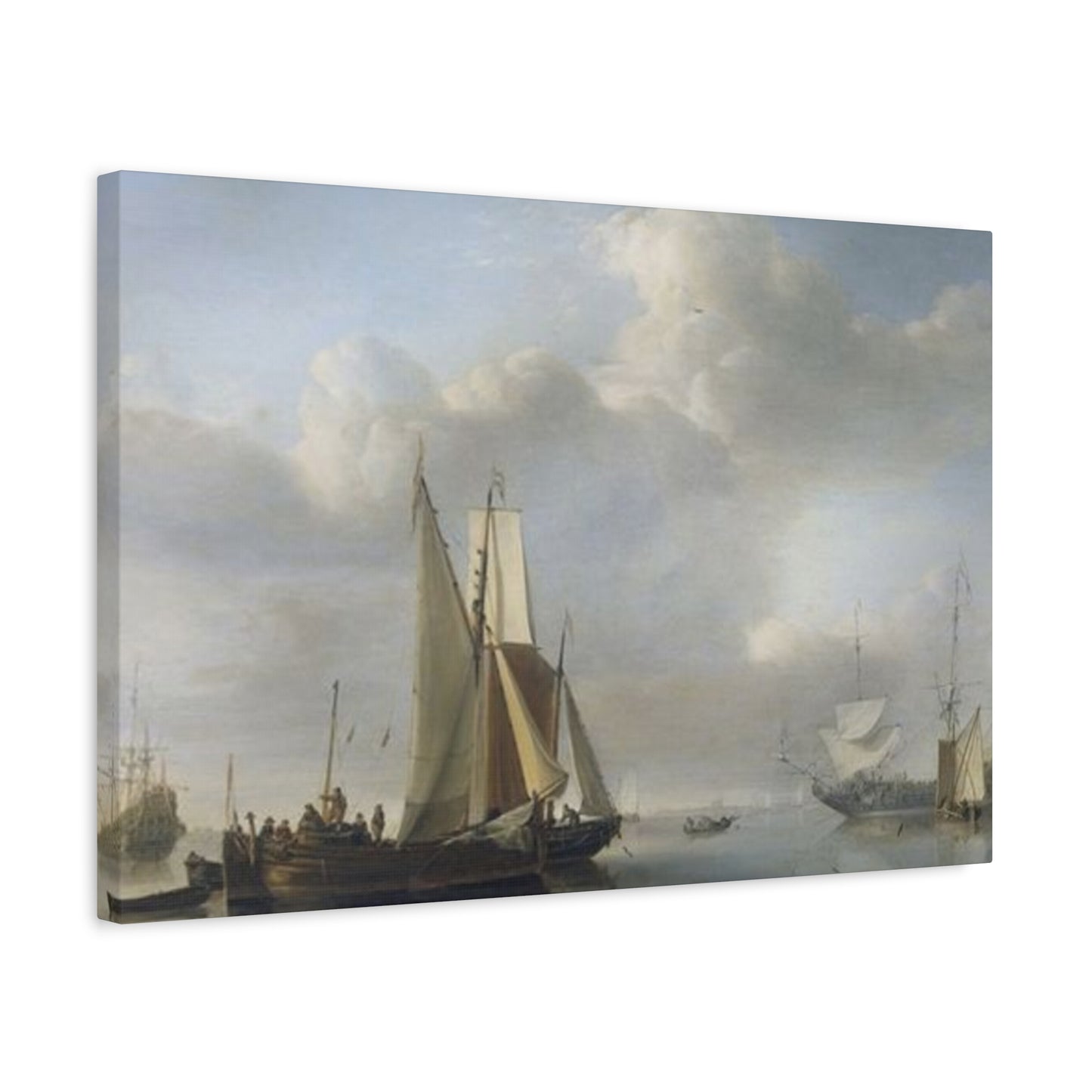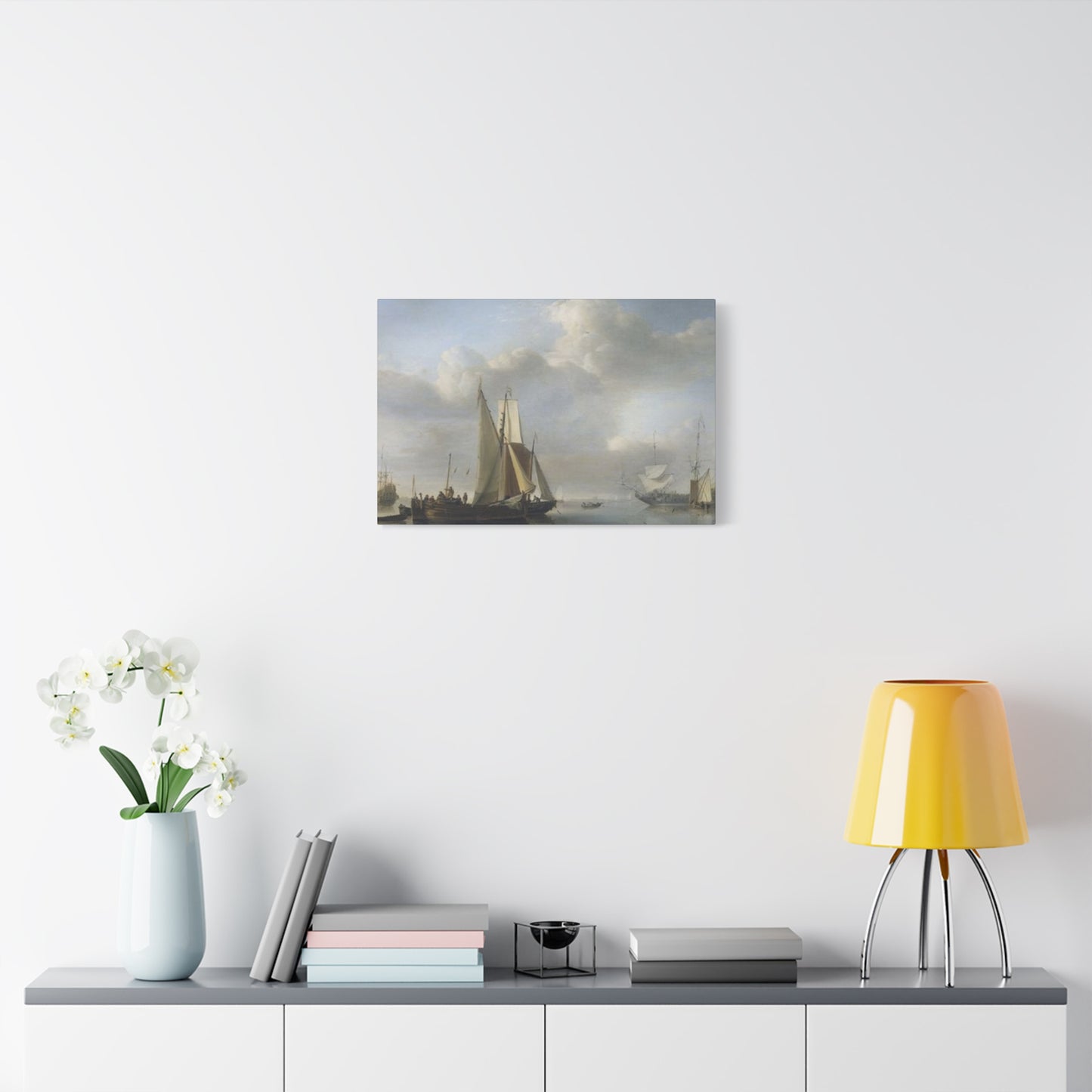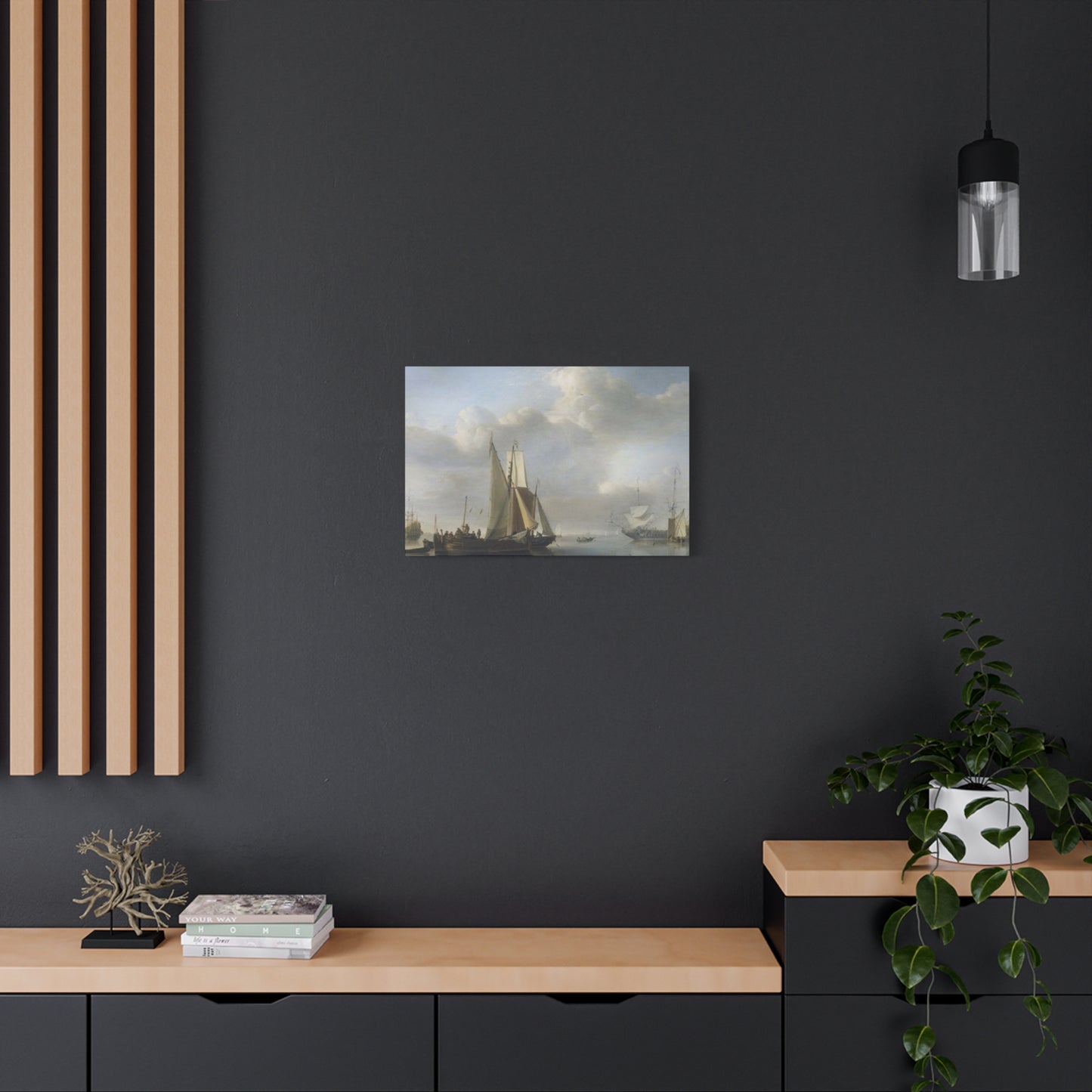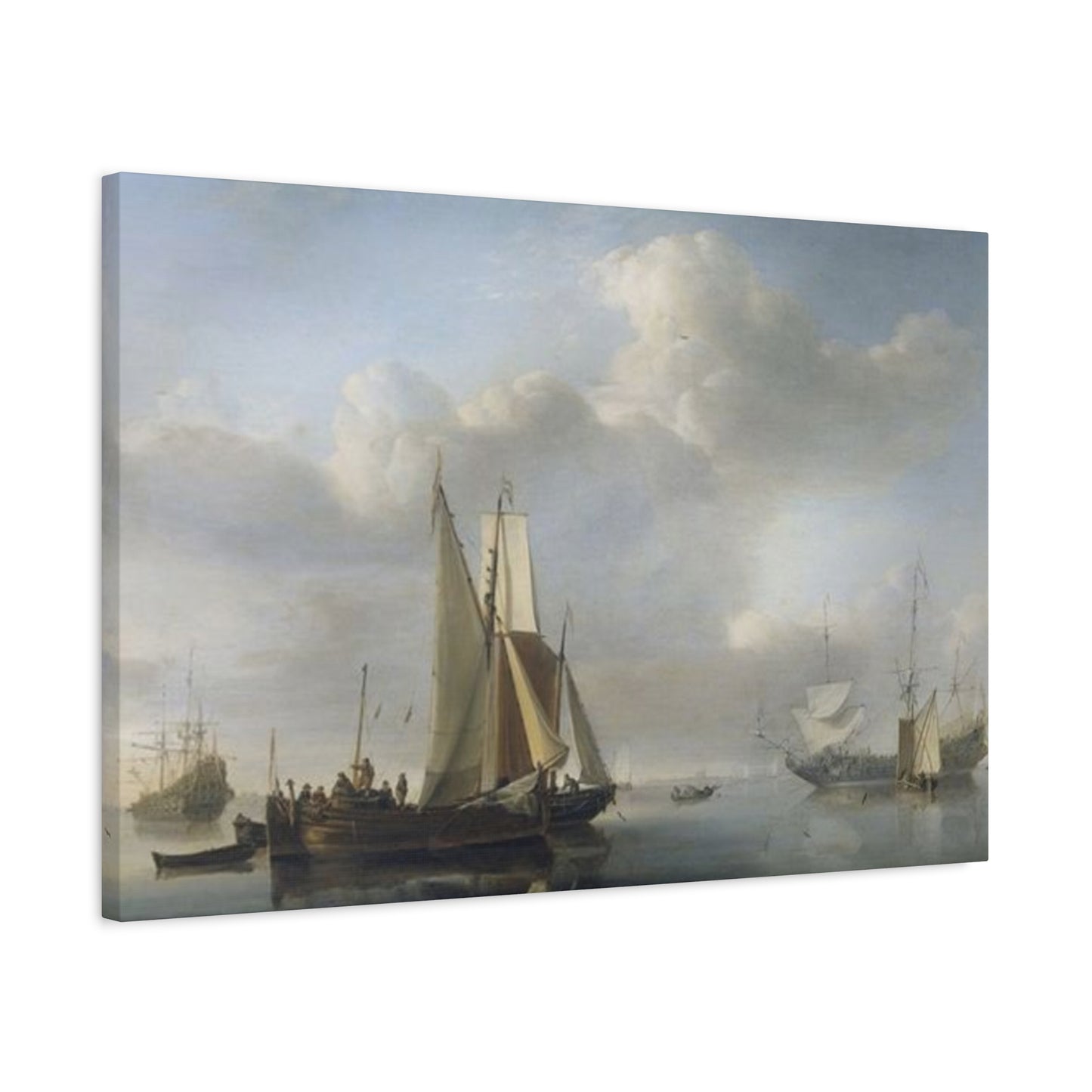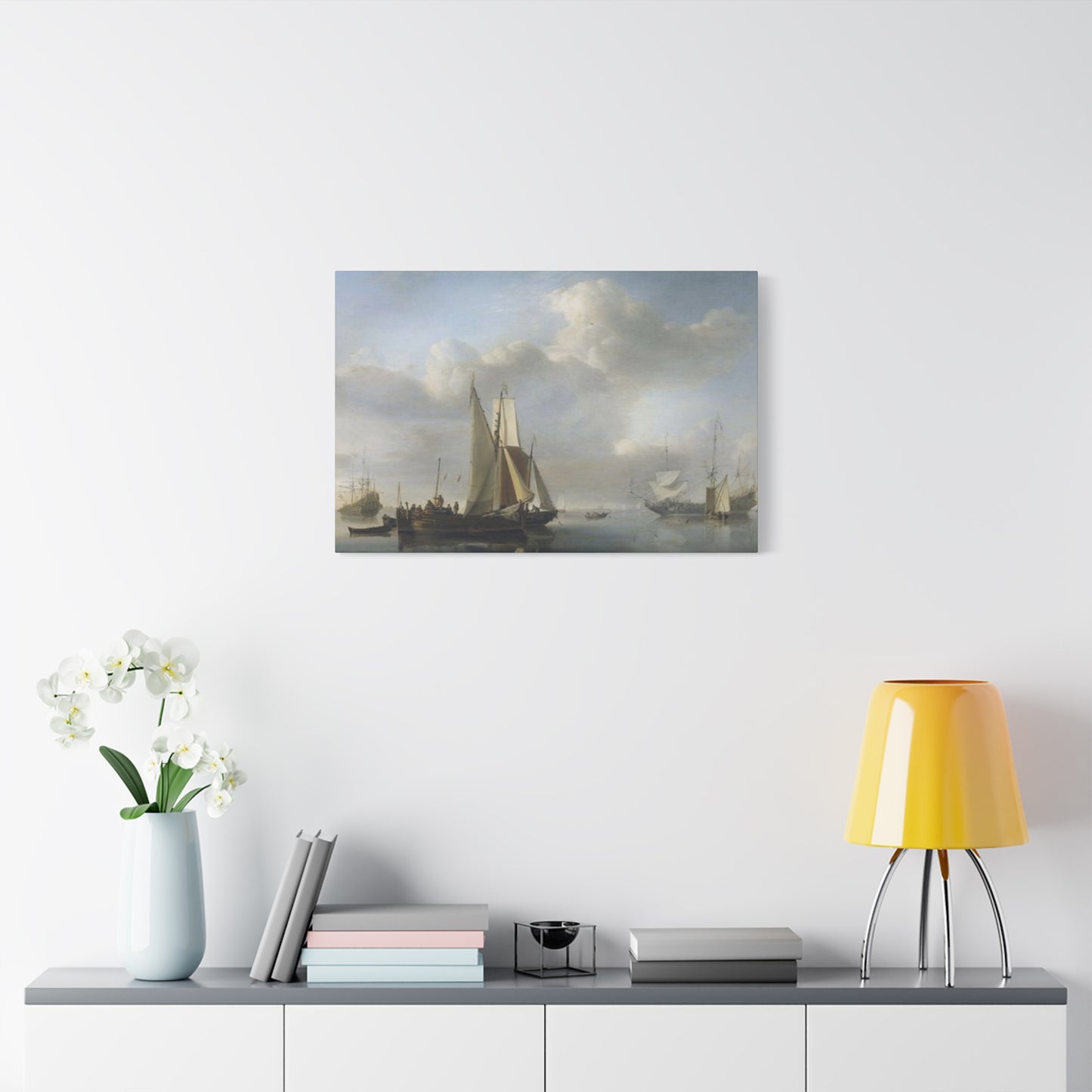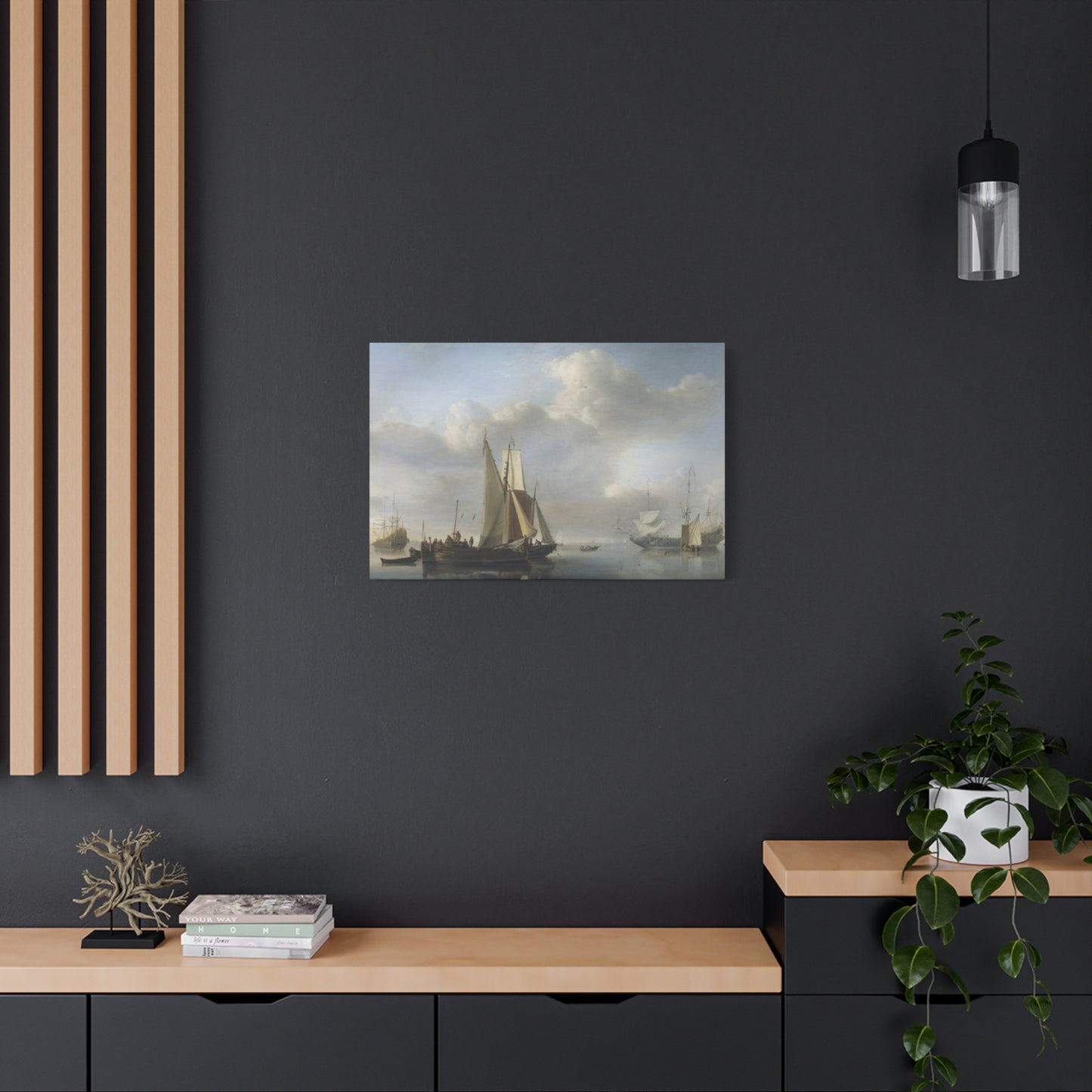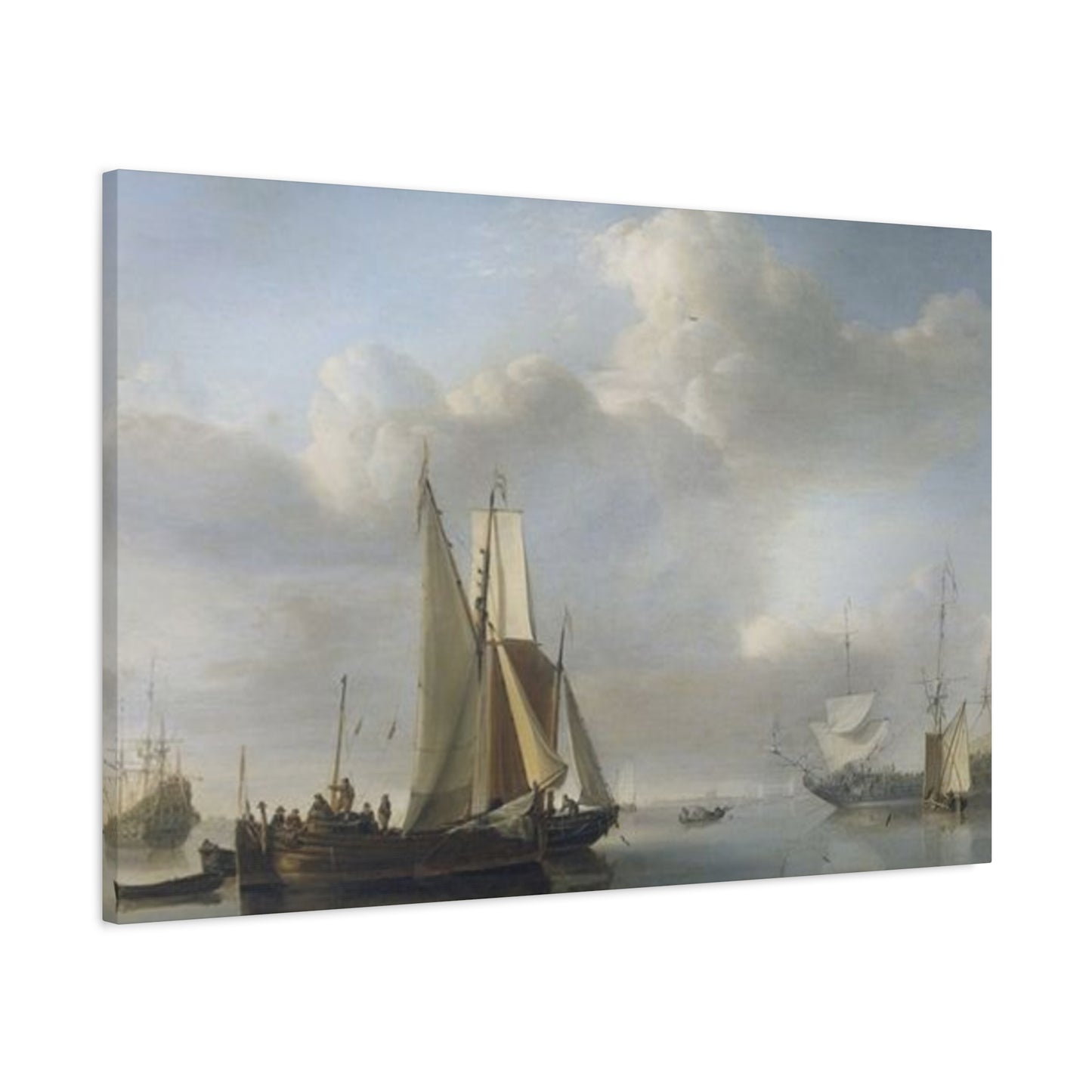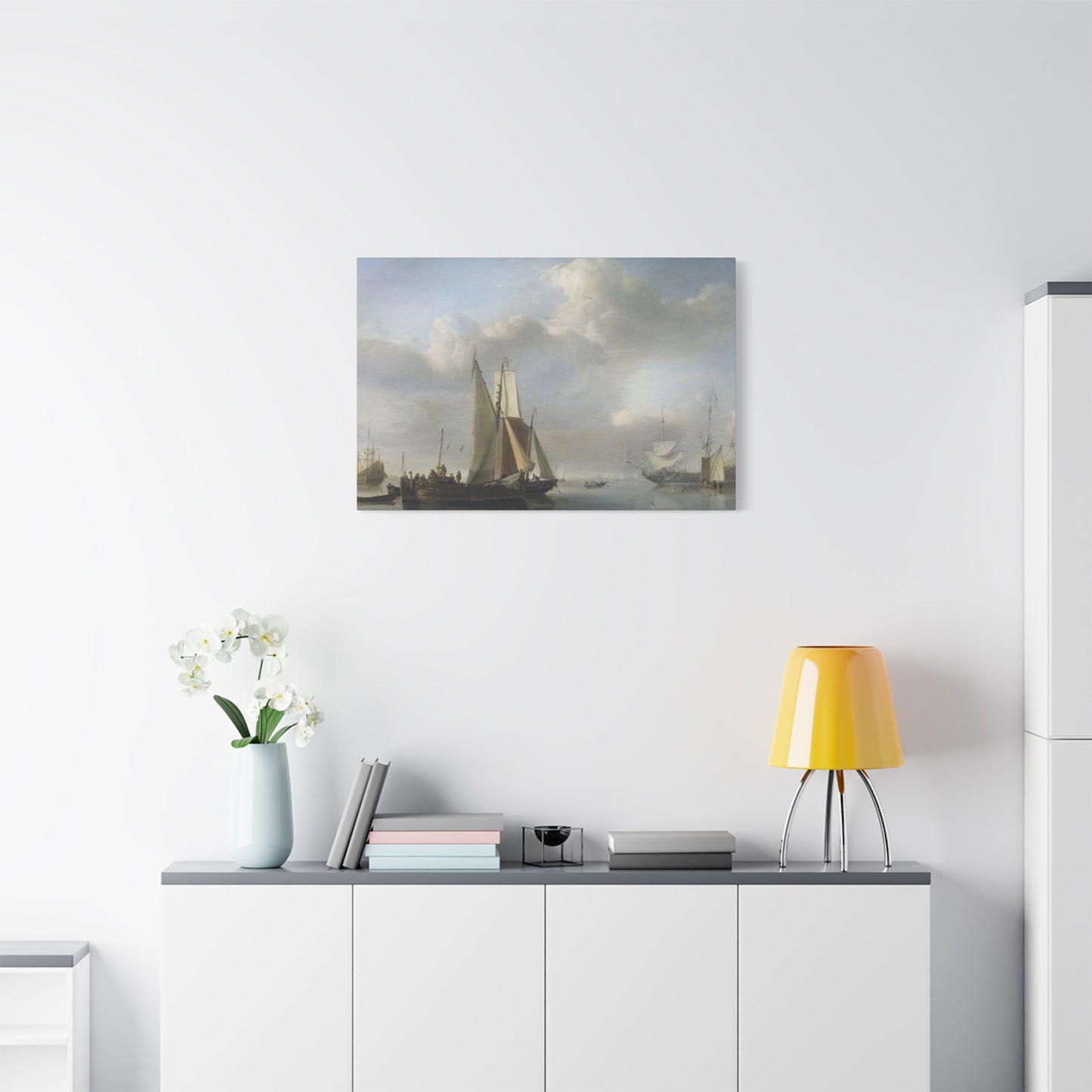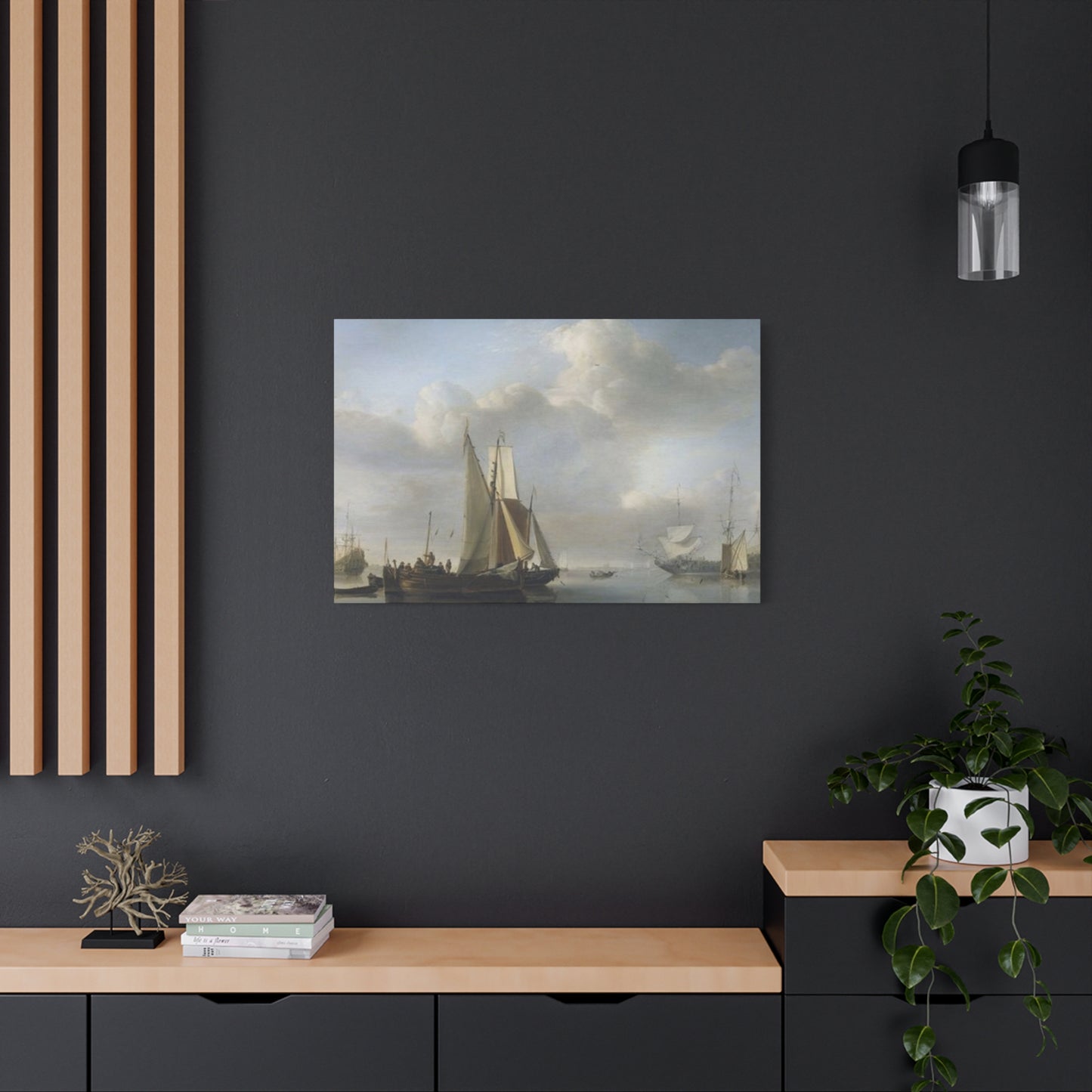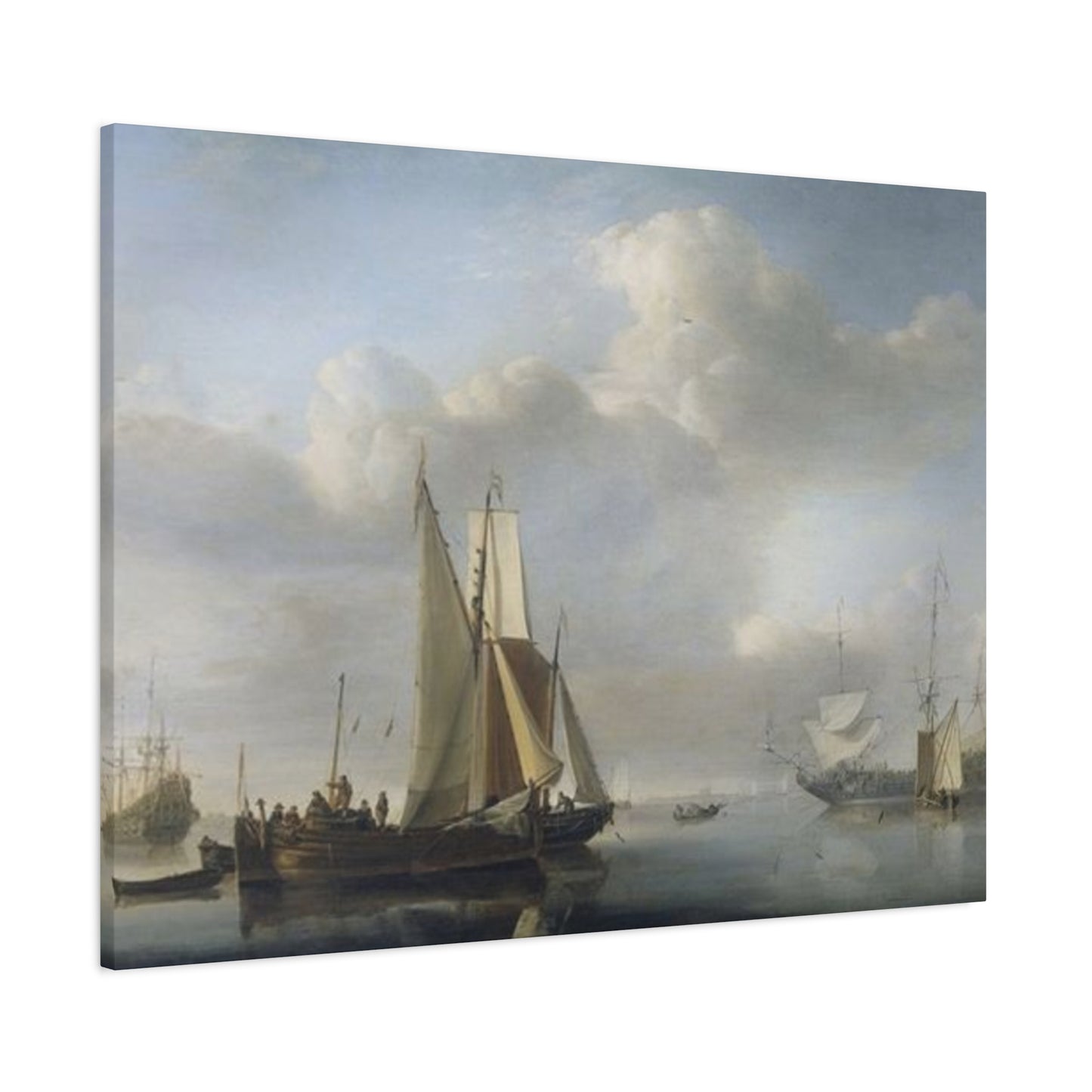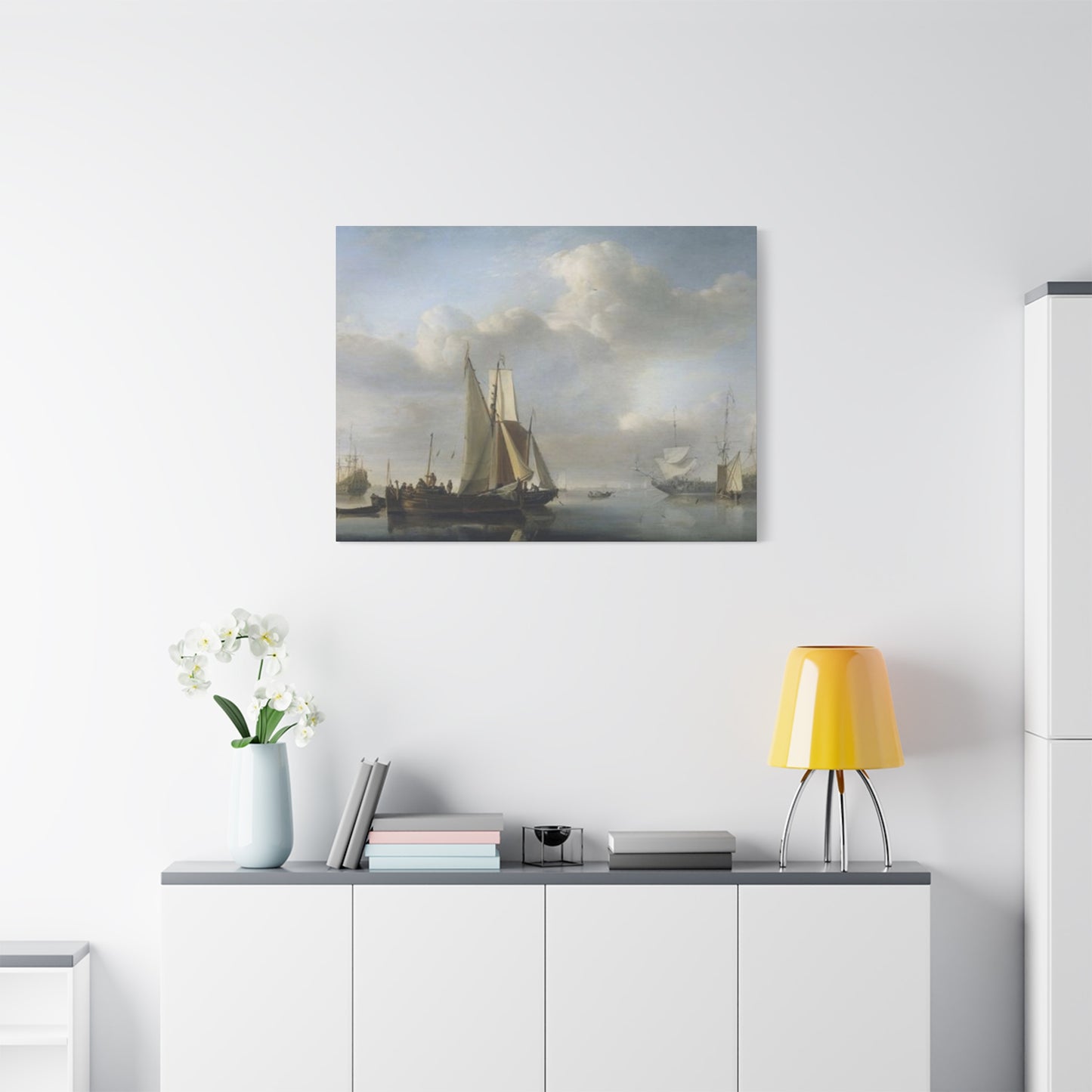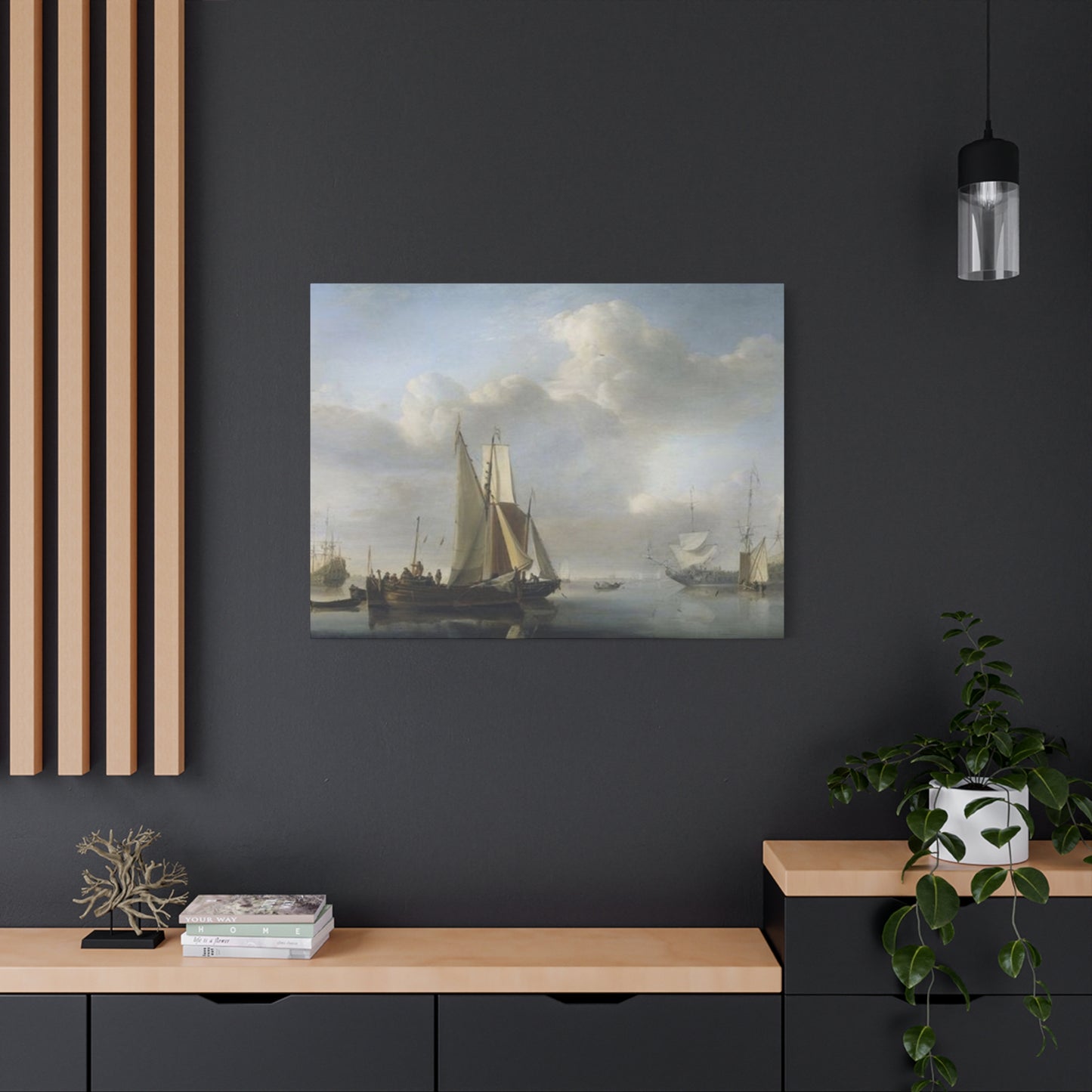Navigating Aesthetics: The Enduring Appeal of Ships in Ocean Wall Art
The ocean has forever held a magnetic pull on the human spirit. It is a realm of immense power and profound tranquility, a source of life and a symbol of the great unknown. Its vast, shimmering horizons have beckoned explorers, inspired poets, and challenged the very limits of human ingenuity. At the heart of this enduring romance is the ship, a vessel of ambition, a testament to our desire to connect, discover, and conquer. The fusion of these two powerful elements—the boundless sea and the determined vessel—creates a narrative that is both epic and deeply personal. This narrative is captured with breathtaking beauty in the genre of ships in ocean wall art, a category of decor that transcends mere aesthetics to evoke a deep sense of journey, history, and emotion. This art form is a portal, offering a window from our interior spaces to the wide-open world of maritime adventure.
Choosing to display ships in ocean wall art is an invitation for these stories and emotions to become part of our daily lives. A single image can speak volumes: a majestic tall ship with sails full against a setting sun whispers of a golden age of exploration; a lone fishing boat on a calm morning sea evokes a sense of peaceful solitude and humble perseverance; a mighty vessel battling a tempestuous storm becomes a powerful metaphor for resilience in the face of adversity. This exploration will navigate the deep and varied waters of this captivating art form. We will delve into the rich symbolism embedded in these scenes, chart the diverse artistic styles that have sought to capture their essence, and examine how different types of vessels contribute to the narrative. Finally, we will provide a comprehensive guide on how to integrate these powerful images into your home, turning your walls into a testament to the timeless and compelling allure of ships upon the ocean.
The Ship as a Metaphor for Life's Journey
At its most fundamental level, the image of a ship on the ocean is a powerful and universally understood metaphor for the journey of life itself. Our language is filled with maritime expressions that reflect this deep-seated connection: we speak of "navigating" challenges, "weathering the storm," welcoming "a sea of change," or feeling "lost at sea." Ships in ocean wall art tap directly into this archetypal symbolism. The ship represents the individual, the soul, or the self, while the vast, unpredictable ocean represents the course of life, with all its opportunities, challenges, calm stretches, and turbulent periods. A piece of art depicting a ship sailing purposefully toward the horizon can serve as a daily inspiration, a reminder of our own goals, ambitions, and the forward momentum of our personal voyage. It visualizes the process of moving from the known to the unknown, leaving the safe harbor of the past to explore the potential of the future.
The state of the sea and the condition of the ship in the artwork add further layers to this metaphor. A vessel sailing on placid, sunlit waters can symbolize a period of peace, success, and smooth progress in life. It evokes feelings of optimism and control, suggesting that the journey is proceeding as planned. Conversely, a ship tossed by towering waves under a dark, stormy sky represents life's inevitable trials and tribulations. This imagery, far from being purely negative, can be a potent symbol of resilience and strength. It acknowledges that hardship is a part of the journey, but the steadfastness of the ship affirms our ability to endure and ultimately overcome adversity. Displaying such a piece can be a source of encouragement during difficult times, a testament to the strength of the human spirit. In this way, ships in ocean wall art becomes more than just a decorative object; it becomes a mirror for our own experiences, a visual narrative of our personal journey through the great ocean of life.
Adventure and Exploration: The Call of the Open Horizon
For centuries, the open ocean was the final frontier, a vast, mysterious expanse that promised both immense riches and untold dangers. The ship was the key that unlocked this frontier, the technological marvel that allowed humanity to venture beyond the shoreline and discover new worlds. This spirit of adventure, discovery, and bold exploration is a core theme in many pieces of ships in ocean wall art. Artwork featuring historic galleons, majestic clippers, or Viking longships immediately transports the viewer to an age of daring voyages and epic discovery. These images are imbued with a sense of courage and a relentless curiosity about what lies beyond the horizon. They celebrate the human impulse to explore, to map the unknown, and to push the boundaries of our world. A painting of a fleet of ships setting sail is a powerful depiction of ambition and the start of a grand adventure, filled with potential and promise.
This theme is not confined to historical vessels. A modern sailboat, sails catching the wind as it cuts cleanly through the waves, captures the same spirit of freedom and exploration in a contemporary context. It speaks to the personal adventures we seek, whether it's traveling to new places, starting a new venture, or embarking on a journey of self-discovery. The open horizon, a dominant feature in much of this art, is a potent symbol of the future and its limitless possibilities. It represents a blank canvas upon which we can project our hopes and dreams. Placing ships in ocean wall art that emphasizes this theme of adventure can infuse a space with a dynamic and inspiring energy. It's an ideal choice for a home office, a study, or any room where creativity and forward-thinking are encouraged. It serves as a constant reminder to stay curious, to embrace new challenges, and to never lose the desire to see what lies just over the horizon.
Resilience and Fortitude: Ships Weathering the Storm
Some of the most dramatic and emotionally resonant works of maritime art depict ships not in serene conditions, but in the midst of a violent storm. These images of a vessel being battered by colossal waves, lashed by wind and rain, with its sails torn and its masts straining, are profound symbols of resilience, fortitude, and the indomitable will to survive. The storm itself represents the overwhelming challenges and chaotic forces that life can throw our way—personal crises, professional setbacks, or periods of intense emotional turmoil. The ship, in its struggle against these elements, becomes a symbol of our own inner strength and our capacity to endure even the most daunting circumstances. It is a visual representation of the fight to stay afloat when it feels like the world is trying to pull you under.
The power of this imagery lies in its honesty. It does not shy away from the darker, more difficult aspects of the human experience. Instead, it confronts them head-on, finding a strange and sublime beauty in the struggle itself. The sight of a ship, however battered, still defiantly afloat and continuing on its course is incredibly empowering. It suggests that strength is not about avoiding storms, but about having the courage and the structural integrity to withstand them. This type of ships in ocean wall art can be a source of immense inspiration and comfort. In a living room, it can serve as a testament to a family's ability to stick together through thick and thin. In a personal space, it can be a private reminder of one's own resilience and the challenges one has overcome. It is a declaration that no matter how fierce the tempest, the human spirit, like a well-built ship, is designed to endure and ultimately find its way back to calmer waters.
Tranquility and Solitude: A Lone Vessel on a Calm Sea
In stark contrast to the drama of a storm, the image of a single ship on a calm, expansive ocean is a powerful evocation of tranquility, solitude, and peace. This style of ships in ocean wall art offers a visual escape from the noise and chaos of daily life. The scene is often characterized by a vast, open sky, still water that perfectly reflects the colors of the dawn or dusk, and a lone vessel moving silently through the scene. The solitude depicted here is not one of loneliness or isolation, but one of serene contemplation and self-sufficiency. The lone ship is at peace with its surroundings, a master of its own small universe, navigating a world of quiet beauty. It represents a state of inner calm, a moment of perfect harmony between the self and the world.
This type of artwork is perfectly suited for creating a relaxing and meditative atmosphere. In a bedroom, a large canvas depicting a sailboat drifting on a glassy sea at sunrise can help to set a peaceful tone for the beginning and end of each day. In a bathroom, it can enhance a spa-like feel, transforming the space into a sanctuary for relaxation. The sense of vastness in these paintings—the endless sea and sky—can also help to make a small room feel larger and more open. It draws the eye outward, creating a sense of depth and perspective that can be very calming. This imagery encourages the viewer to take a deep breath, to quiet their mind, and to find a moment of stillness in their busy day. It is a gentle reminder that even in the midst of life's vast and often turbulent ocean, it is always possible to find moments of profound peace and quiet contemplation.
Freedom and Escape: Casting Off from the Shore
The act of a ship leaving the harbor and heading out to the open sea is a potent symbol of freedom and escape. The shore represents the familiar, the routine, the constraints and responsibilities of daily life. The open ocean, by contrast, represents liberation, the casting off of moorings, and the freedom to chart one's own course. Ships in ocean wall art that captures this moment of departure can evoke a powerful sense of exhilaration and possibility. It speaks to the deep-seated human desire to break free from the mundane, to leave our worries behind on the dock, and to embrace the untamed freedom of the open water. The image of a sailboat, its sails filled with wind, pulling away from the land is a particularly strong representation of this theme. It is a visual metaphor for taking control of one's own destiny and being propelled forward by the forces of nature and personal ambition.
This theme of escape can be interpreted in many ways. For some, it may represent the literal desire to travel and see the world. For others, it can be a more metaphorical escape—a desire to break free from a restrictive job, a difficult situation, or a limiting mindset. The artwork serves as an inspiration to make bold choices and to pursue a life that is more aligned with one's true desires. Displaying a piece with this theme in a prominent place, such as an entryway or a living room, can serve as a daily reminder of the possibilities that lie ahead. It encourages a mindset of proactive change and personal liberty. It is a celebration of the courage it takes to leave the safety of the harbor and to face the wide-open sea, with all the freedom and challenges that it entails. This type of art doesn't just decorate a wall; it inspires a more adventurous and self-determined approach to life.
Commerce and Connection: Vessels as Bridges Between Worlds
Beyond the personal metaphors of journey and freedom, ships have always served a vital, practical purpose: they are the engines of commerce and the primary means of connection between distant lands and cultures. For millennia, ships have carried goods, people, and ideas across the oceans, weaving the world into a single, interconnected tapestry. Ships in ocean wall art that depicts bustling harbors, trade routes, or powerful cargo vessels speaks to this history of global exchange and human ingenuity. A painting of a historic port city, with tall ships from various nations docked side-by-side, is a celebration of multiculturalism and economic prosperity. It highlights the role of maritime trade in building empires, sharing knowledge, and fostering cultural exchange. These scenes are filled with energy and activity, a testament to human enterprise and our collective drive to reach out and connect with one another.
In a modern context, a photograph or painting of a massive container ship or an oil tanker can be a powerful symbol of the globalized world we live in today. While perhaps less romantic than a tall ship, these industrial titans are the lifeblood of the modern economy, representing the incredible logistical feats that connect us all. Displaying art that reflects this theme can be particularly appropriate in a study or office, as it speaks to ambition, industry, and the mechanics of the global marketplace. It can also serve as a reminder of our interconnectedness, highlighting the fact that the products we use and the cultures we admire are often brought to us by these tireless vessels crossing the vast oceans. This type of artwork provides a broader perspective, shifting the focus from the individual journey to the collective human endeavor of building a connected and prosperous world. It celebrates the ship not just as a vessel of escape, but as a vessel of connection.
Nostalgia and History: Tall Ships and the Age of Sail
There is a powerful sense of nostalgia and romanticism associated with the Age of Sail. The image of a tall ship, with its complex rigging, billowing white sails, and ornate wooden hull, evokes a bygone era of adventure, craftsmanship, and a more direct, elemental relationship with the sea. Ships in ocean wall art that features these magnificent vessels is a tribute to maritime history and the incredible skill and bravery of the sailors who crewed them. These artworks are not just pictures of boats; they are historical documents, capturing the design of famous vessels like galleons, clippers, frigates, and schooners. They transport us back to a time before engines, when crossing the ocean was a monumental undertaking that relied entirely on the wind and human expertise. This historical aspect adds a layer of intellectual depth and sophistication to the artwork.
Displaying a piece depicting a tall ship can lend a sense of classic, timeless elegance to a room. It pairs beautifully with traditional decor, dark wood furniture, leather armchairs, and nautical instruments like brass compasses or telescopes. It is a perfect choice for a library, a den, or a formal living room, where it can serve as a distinguished and conversation-starting focal point. The appeal of these images is rooted in a longing for a simpler, yet more adventurous time. They represent a world of tangible skills, natural forces, and grand narratives. For history buffs, sailing enthusiasts, or anyone who appreciates classic beauty and the romance of the past, wall art featuring the great sailing ships of history is an enduringly popular and meaningful choice. It connects the present to a rich and fascinating maritime heritage, keeping the spirit of the Age of Sail alive within the walls of the modern home.
Majestic Realism: Capturing Every Detail of a Seascape
The style of majestic realism in ships in ocean wall art is dedicated to capturing a scene with the highest possible degree of fidelity and detail. Artists working in this style are masters of their craft, possessing a deep understanding of light, texture, anatomy of a ship, and the physics of water. A realist painting of a maritime scene is a window into a moment frozen in time. You can almost feel the spray of the sea, hear the creak of the ship's timbers, and see the intricate details of the rigging against a photorealistic sky. The artist pays meticulous attention to every element: the translucency of a wave as it crests, the subtle variations in color on a weathered hull, the precise rendering of the sails as they catch the wind, and the dramatic play of light and shadow across the entire composition. This style is not just about copying reality; it is about heightening it, presenting a vision of the maritime world that is so clear and detailed that it feels more real than a photograph.
This approach to maritime art has a long and distinguished history, with artists like J.M.W. Turner (in his earlier works) and Montague Dawson being celebrated masters of the genre. The appeal of realism lies in its ability to be both awe-inspiring and educational. It allows the viewer to appreciate the technical marvel of the ship's construction and the immense, tangible power of the ocean. This style of art commands attention and lends an air of sophistication and classic elegance to any space. A large, highly detailed realist oil painting of a tall ship in full sail is a timeless statement piece, perfectly suited for a formal living room, a corporate office, or a traditional study. It speaks of an appreciation for fine craftsmanship, historical accuracy, and the enduring, objective beauty of the world. It is a style that rewards close inspection, revealing new details and nuances with every viewing.
Luminous Impressionism: The Play of Light on Water and Sail
Emerging in the 19th century as a rebellion against the strictures of academic realism, Impressionism offered a new way of seeing the world. For maritime artists, this meant shifting the focus from capturing every minute detail of a ship to capturing the fleeting, sensory experience of being at sea. Impressionistic ships in ocean wall art is all about light and color. Artists like Claude Monet, with his famous "Impression, Sunrise," sought to depict the way light reflects off the surface of the water, the way the colors of the sky infuse the sea and the sails, and the overall atmosphere of a scene at a particular moment in time. The brushwork is often visible, energetic, and expressive, with dabs of pure color placed side-by-side to create a shimmering, vibrant effect. The forms of the ships and waves may be softened and less defined, blending into their surroundings in a harmonious dance of light.
The effect of an impressionistic seascape is less about providing a literal depiction and more about evoking a feeling. It captures the breezy, sun-drenched feeling of a day's sailing, the hazy, tranquil atmosphere of a foggy morning in a harbor, or the dazzling, fractured light of a sunset over the water. This style is less formal and more personal than realism. It is wonderfully suited for creating a bright, airy, and relaxed atmosphere in a home. An impressionistic canvas print can bring a splash of color and light to a coastal-themed living room, a sunroom, or a bedroom. It pairs well with light-colored furniture, natural textures, and a decor scheme that prioritizes comfort and casual elegance. Impressionistic art invites the viewer to share in the artist's subjective experience, to feel the warmth of the sun and the gentle movement of the boat, making it a joyful and uplifting choice for wall decor.
Romanticism's Tempest: The Sublime Power of the Ocean
The Romantic art movement of the late 18th and early 19th centuries was fascinated by the concepts of the sublime and the awesome, untamed power of nature. The ocean, in all its tempestuous and unpredictable glory, was a perfect subject. Romantic ships in ocean wall art, exemplified by the masterful works of artists like J.M.W. Turner and Caspar David Friedrich, often depicts humanity's struggle against the overwhelming forces of the natural world. These are not calm, peaceful scenes. Instead, they are filled with drama, emotion, and a sense of awe that borders on terror. The ships are often shown as small and vulnerable, tossed by monstrous waves, their masts broken, silhouetted against a sky filled with churning, apocalyptic clouds of black, grey, and fiery orange. The focus is not on the ship itself, but on the emotional experience of being in the midst of such a powerful event.
The goal of this style is to evoke the feeling of the sublime—a mixture of fear, wonder, and reverence for something so powerful that it is beyond human comprehension. These paintings are a humbling reminder of nature's dominance and our own fragility. Yet, they are also a testament to human courage and the will to survive even in the face of impossible odds. The beauty found in these chaotic scenes is a dramatic, theatrical one. This style of art is a bold and powerful choice for a statement piece. A large canvas depicting a storm at sea in the Romantic style can be a captivating and thought-provoking focal point in a dining room, a study, or a grand entryway. It is for those who are drawn to drama, history, and the profound philosophical questions about humanity's place in the universe. It is an art style that doesn't just decorate a room; it fills it with epic emotion and intellectual weight.
Abstract Navigations: Deconstructing the Ship and Sea
Abstract art takes the elements of a scene—the ship, the sea, the sky—and breaks them down into their fundamental components of color, line, and form. Abstract ships in ocean wall art is not concerned with creating a recognizable picture, but with conveying the feeling, energy, or idea of a maritime experience. The artist might use a series of sharp, angular lines to represent the tension and structure of a ship's rigging, contrasted with broad, flowing swathes of blue and green to evoke the movement of the water. A piece might focus entirely on the rhythmic pattern of waves, with just a single, solid shape to suggest the presence of a vessel. The ship could be reduced to a simple triangle for a sail, or a crescent for a hull, allowing the viewer's imagination to construct the rest of the scene.
The power of abstract art lies in its open-endedness. It encourages a personal and emotional response rather than a literal interpretation. A vibrant, chaotic abstract piece might capture the disorienting feeling of being in a storm, while a serene composition of horizontal bands of color could evoke the profound calm of a still sea at dawn. This style is perfectly suited for modern and contemporary interiors, where it can add a splash of color, texture, and intellectual curiosity. It pairs well with clean lines, minimalist furniture, and a neutral color palette, allowing the artwork to become a dynamic focal point. Abstract art challenges the viewer to look beyond the surface and to engage with the subject on a deeper, more intuitive level. For those who appreciate modern art and want to express the idea of the sea and sailing in a non-traditional way, abstract interpretations offer a world of creative and sophisticated possibilities.
The Grandeur of Tall Ships and Galleons
When one envisions ships in ocean wall art, the image that often comes to mind first is that of a magnificent tall ship. These multi-masted sailing vessels, such as galleons, clippers, frigates, and barques, represent the zenith of the Age of Sail and carry with them an undeniable aura of history, romance, and high adventure. A galleon, with its high, ornate sterncastle and multiple square-rigged sails, immediately evokes the era of Spanish treasure fleets and epic sea battles. It's a symbol of power, wealth, and empire-building. The clipper ship, on the other hand, with its sleek, narrow hull and vast spread of canvas, was built for speed. It represents the pinnacle of 19th-century naval architecture and the frantic global trade in commodities like tea and gold. Depictions of these ships are often dramatic, showcasing their ability to harness the wind for incredible speed and grace.
Artwork featuring these vessels is steeped in detail and historical significance. Artists often take great care to accurately render the complex rigging, the intricate carvings on the hull, and the specific flag or pennant that identifies the ship's nationality or purpose. This attention to detail adds a layer of authenticity and educational value to the art. Tall ship art is a classic and timeless choice, lending a sense of dignity and historical weight to a room. It is particularly well-suited for traditional or transitional decor styles, and it makes a powerful statement in a home library, a formal study, or above a fireplace mantel. The grandeur of these vessels speaks to a bygone era of unparalleled craftsmanship and daring exploration. Displaying a piece of tall ship art is a way of honoring this rich maritime heritage and bringing a piece of its epic story into the modern home.
The Humble Beauty of Fishing Boats and Dories
While tall ships represent grand historical narratives, the humble fishing boat tells a more intimate, personal story of human perseverance and a direct, daily connection to the sea. Ships in ocean wall art featuring small fishing boats, dories, or trawlers celebrates the lives of ordinary working people and the quiet dignity of their labor. These scenes are often more peaceful and contemplative. Imagine a painting of a collection of colorful fishing boats resting in a calm harbor at sunrise, their reflections shimmering on the water. This image evokes a sense of community, of a day's work done, and the promise of a new beginning. Or consider a lone dory on a misty morning, a single fisherman casting his nets. This is a powerful symbol of self-reliance, patience, and the timeless, rhythmic cycle of human life in harmony with nature.
The beauty of these vessels lies in their simplicity and their well-worn character. The chipped paint on a hull, the mended nets piled on the deck, and the weathered wood all tell a story of a life spent on the water. This type of artwork often has a rustic, coastal charm that is perfect for creating a relaxed, welcoming atmosphere. It is an ideal choice for a kitchen, a breakfast nook, a sunroom, or a home with a coastal or farmhouse design theme. It brings a sense of authenticity and groundedness to a space. Unlike the epic tales of galleons, the story of the fishing boat is a quieter one, but no less profound. It is a tribute to hard work, the bounty of the ocean, and the enduring human spirit that finds its livelihood and its meaning in the ebb and flow of the tides.
The Calming Blues and Greens of Serene Waters
Color is perhaps the most powerful tool an artist has to set the mood of a scene, and in ships in ocean wall art, the palette of blues and greens is fundamental to creating a sense of calm and serenity. Blue, the dominant color of the ocean and sky, is psychologically associated with tranquility, stability, and spaciousness. A painting dominated by soft, gentle blues—from the pale cerulean of a tropical sea to the deep navy of the open ocean—can have a profoundly calming effect on the viewer. It can lower heart rates and create a feeling of peace, making it an ideal choice for spaces designed for relaxation, such as a bedroom or a quiet reading corner. The vastness of the blue in a seascape can also make a room feel larger and more open, acting as a visual window to an endless horizon.
Green, often appearing as turquoise, teal, or aquamarine where the water is shallow or kissed by the sun, adds another layer of tranquility. Green is the color of nature, life, and renewal. It has a balancing and harmonizing effect. When blended with blue, it creates the iconic colors of coastal and tropical waters, evoking feelings of escape, vacation, and natural purity. An artwork that skillfully blends these calming hues can transform a room into a peaceful sanctuary. Imagine a lone sailboat gliding across a sea of shimmering turquoise and sapphire under a soft, pale blue sky. This image is a visual lullaby, an invitation to let go of stress and embrace a moment of quiet contemplation. By choosing a piece that emphasizes this serene palette, you can harness the therapeutic power of color to create a home environment that feels both restful and rejuvenating.
The Fiery Oranges and Reds of a Maritime Sunset
There are few sights in nature as universally beloved and emotionally stirring as a sunset over the water. Ships in ocean wall art that captures this magical time of day is imbued with a sense of warmth, romance, and dramatic beauty. The color palette shifts from the cool tones of daylight to a spectacular display of fiery oranges, brilliant reds, deep purples, and soft pinks. These warm colors are energizing and emotionally engaging. Red is associated with passion, energy, and love, while orange is linked to warmth, enthusiasm, and creativity. A painting of a ship silhouetted against a brilliant sunset is a powerful and captivating image. It can symbolize the end of a journey, a moment of reflection after a long day, or a beautiful, peaceful closure.
This type of artwork can bring a tremendous amount of warmth and character to a room. It is a perfect choice for a living room or dining area, where it can create an inviting, sociable, and cozy atmosphere. The dramatic colors of the sunset naturally draw the eye, making the artwork an instant focal point. A large canvas depicting a maritime sunset can set the entire color scheme for a room, with accent colors pulled from the painting and used in cushions, throws, or other decorative items. Beyond its aesthetic appeal, a sunset scene can also be a source of daily inspiration. It is a reminder of the beauty that can be found at the end of each day and the promise of a new dawn to come. It's a celebration of the fleeting, beautiful moments in life, captured forever on canvas.
Classic Elegance: Oil on Canvas Ship Paintings
For centuries, oil on canvas has been the preeminent medium for serious maritime artists, and for good reason. Oil paints offer a richness, depth, and luminosity that is perfectly suited to capturing the complex beauty of the sea and the sky. The slow drying time of oils allows artists to work on a piece for extended periods, enabling them to blend colors seamlessly, create subtle gradations of light and shadow, and build up layers of translucent glazes. This layering technique can give the water a sense of incredible depth and make the sails of a ship appear to glow with captured light. An oil painting has a tangible presence and a sense of permanence. The texture of the paint on the canvas—the visible brushstrokes or the smooth, polished surface—adds a tactile dimension to the artwork that draws the viewer in.
A classic oil painting of ships in the ocean brings a sense of timeless elegance and sophistication to any interior. It is the quintessential choice for a traditional, transitional, or formal design scheme. A grand, beautifully framed oil painting of a historic tall ship can serve as an heirloom piece, a significant investment that anchors a room with its historical weight and artistic merit. These paintings are not just decorations; they are works of fine art that tell a story of a long and revered artistic tradition. They connect the homeowner to the great maritime painters of the past and carry an air of distinction and refined taste. Whether it's a hyper-realistic depiction of a naval battle or a soft, impressionistic harbor scene, an original oil painting on canvas is an unparalleled choice for those who value craftsmanship, tradition, and the enduring power of classic art.
The Living Room: Creating a Commanding Nautical Focal Point
The living room is the communal heart of the home, a space where family gathers and guests are entertained. It is the prime location for a statement piece of art that can define the room's character and spark conversation. A large, well-chosen piece of ships in ocean wall art is an excellent candidate for this role. To create a commanding focal point, the artwork should be placed in the most prominent position in the room, typically above the main sofa or the fireplace. The scale of the piece is critical; it should be substantial enough to hold its own on the wall, generally about two-thirds the width of the furniture it hangs above. A small picture in a large space will look lost and insignificant, so it's better to err on the side of a larger, more impactful piece.
The style of the artwork should be a deliberate choice that complements the living room's overall design. For a modern, minimalist living room, a large abstract piece with nautical colors or a stark, high-contrast black and white photograph of a ship's silhouette would be stunning. In a cozy, coastal-themed room, a bright, impressionistic painting of sailboats or a rustic piece featuring weathered fishing boats would be more appropriate. A traditional living room with classic furniture would be the perfect setting for a majestic oil painting of a tall ship. The artwork can also serve as the cornerstone of the room's color palette. You can select colors from the painting and repeat them in your throw pillows, rugs, curtains, and other accessories to create a harmonious and cohesive look. By making ships in ocean wall art the centerpiece, you transform your living room from a simple sitting area into a space with a story, a mood, and a distinct point of view.
Conclusion:
Throughout this extensive exploration, it has become clear that ships in ocean wall art is a genre of profound depth and remarkable versatility. It is far more than a simple decorative choice for those who enjoy the coast. It is a timeless narrative captured in a frame, a visual embodiment of the human experience itself. Each piece, whether it depicts a grand galleon charting a new world, a solitary boat finding peace in the dawn, or a resilient vessel battling a fearsome storm, offers a unique story and a powerful emotional resonance. This art form speaks to the adventurer, the dreamer, the historian, and the contemplative soul in all of us. It is a testament to our enduring fascination with the sea—a force of nature that represents both the terrifying sublime and the ultimate source of tranquility.
We have navigated the diverse artistic styles that bring these scenes to life, from the meticulous detail of realism that celebrates the craftsmanship of the vessel, to the luminous, fleeting moments captured by impressionism, and the raw, emotional power of romanticism. We have seen how the choice of vessel, the color palette, and the medium itself—be it the classic elegance of oil, the light touch of watercolor, or the modern precision of a print—all contribute to the story being told. Furthermore, the integration of these pieces into our homes is an art in itself. A maritime artwork can be a commanding focal point in a living room, a source of quiet inspiration in an office, or a window to a serene escape in a bedroom. It has the power to set a mood, define a space, and reflect the innermost aspirations of the inhabitants.
In the end, choosing a piece of ships in ocean wall art is choosing a companion for your personal journey. It is a constant reminder of the vast possibilities that lie beyond the horizon, the strength required to navigate life's inevitable storms, and the profound peace that can be found in moments of quiet solitude. It is an investment in a view that never grows old, a voyage that you can embark upon with every single glance. It confirms that a piece of art on a wall can be a porthole to the wider world, connecting our personal havens to the grand, timeless, and ever-compelling drama of the ship upon the sea.

















